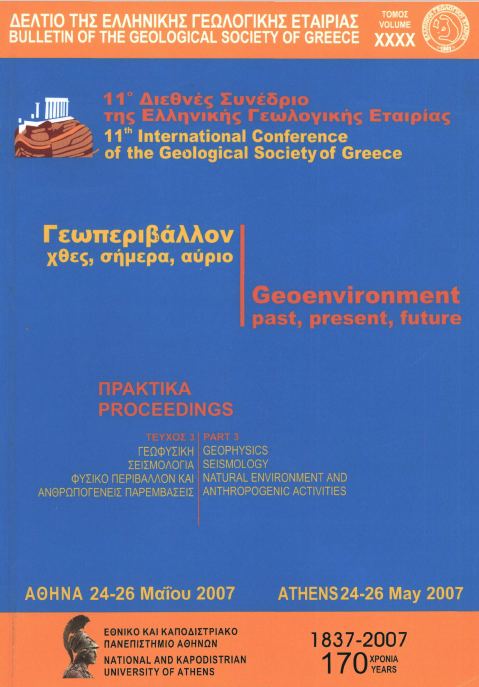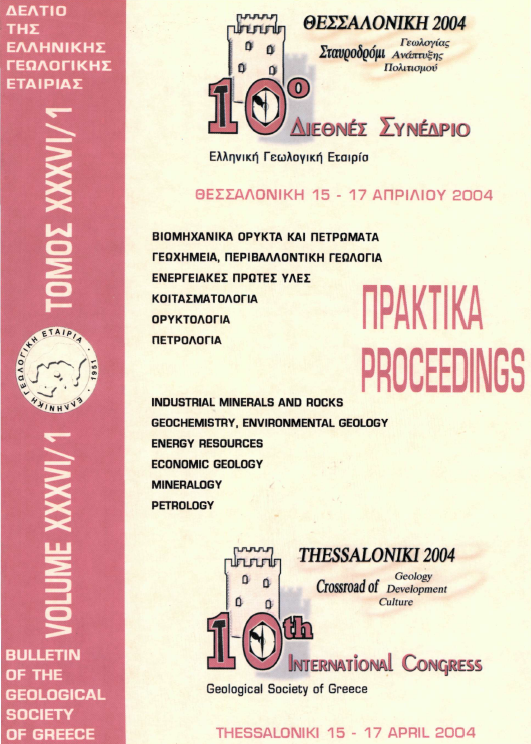ORGANIC GEOCHEMISTRY OF HUMIC ACIDS FROM A NEOGENE LIGNITE SAMPLE, BULGARIA
Περίληψη
Humic substances naturally occur in Miocene/Pliocene-aged lignite at very high concentrations. Here biomarkers in the bitumen-free extract of humic acids from Thracian lignite, Bulgaria, are studied. Applying methods of organic geochemistry a broad range of compounds are isolated and characterised. Species are classified according to abundance, possible source input and diagenetic transformation. A feature of humic acids derived from Thracian coal is the extremely high content of 16α(H)Phyllocladane, ~60% of aliphatic fraction, or 1.6 wt.% of initial lignite. The high diterpenoids content, especially with abietane skeleton, proved the conifer contribution to the peat-forming helophytes, i.e. Cupressaceae s. str., Podocarpaceae, Araucariaceae, Taxodiaceae, Phyllocladus, Piceae. Tightly-trapped, linear long-chain fatty acids (FAs) are the main constituents of the acidic fraction of humic acids. Their distribution patterns indicate a dominant higher plant origin. The presence of αOH-FAs and hopanoid acids assumes bacterial activity in the plant material reworked. A hint for the input of plant biopolymers, i.e. cutin, suberin, is the relative high content of “even” carbon numbered ωΟΗFAs and α,ω-alkanedioic FAs. “Even” numbered short-chain ωΟΗFAs could originate from cutin-derived constituents of the needles of numerous species of gymnospermous families.
Λεπτομέρειες άρθρου
- Πώς να δημιουργήσετε Αναφορές
-
Stefanova, M., & Marinov, S. (2010). ORGANIC GEOCHEMISTRY OF HUMIC ACIDS FROM A NEOGENE LIGNITE SAMPLE, BULGARIA. Δελτίο της Ελληνικής Γεωλογικής Εταιρείας, 43(5), 2398–2405. https://doi.org/10.12681/bgsg.11640
- Ενότητα
- Ενεργειακές Πρώτες Ύλες και Γεωθερμία

Αυτή η εργασία είναι αδειοδοτημένη υπό το CC Αναφορά Δημιουργού – Μη Εμπορική Χρήση 4.0.
Οι συγγραφείς θα πρέπει να είναι σύμφωνοι με τα παρακάτω: Οι συγγραφείς των άρθρων που δημοσιεύονται στο περιοδικό διατηρούν τα δικαιώματα πνευματικής ιδιοκτησίας επί των άρθρων τους, δίνοντας στο περιοδικό το δικαίωμα της πρώτης δημοσίευσης. Άρθρα που δημοσιεύονται στο περιοδικό διατίθενται με άδεια Creative Commons 4.0 Non Commercial και σύμφωνα με την οποία μπορούν να χρησιμοποιούνται ελεύθερα, με αναφορά στο/στη συγγραφέα και στην πρώτη δημοσίευση για μη κερδοσκοπικούς σκοπούς. Οι συγγραφείς μπορούν να: Μοιραστούν — αντιγράψουν και αναδιανέμουν το υλικό με κάθε μέσο και τρόπο, Προσαρμόσουν — αναμείξουν, τροποποιήσουν και δημιουργήσουν πάνω στο υλικό.





